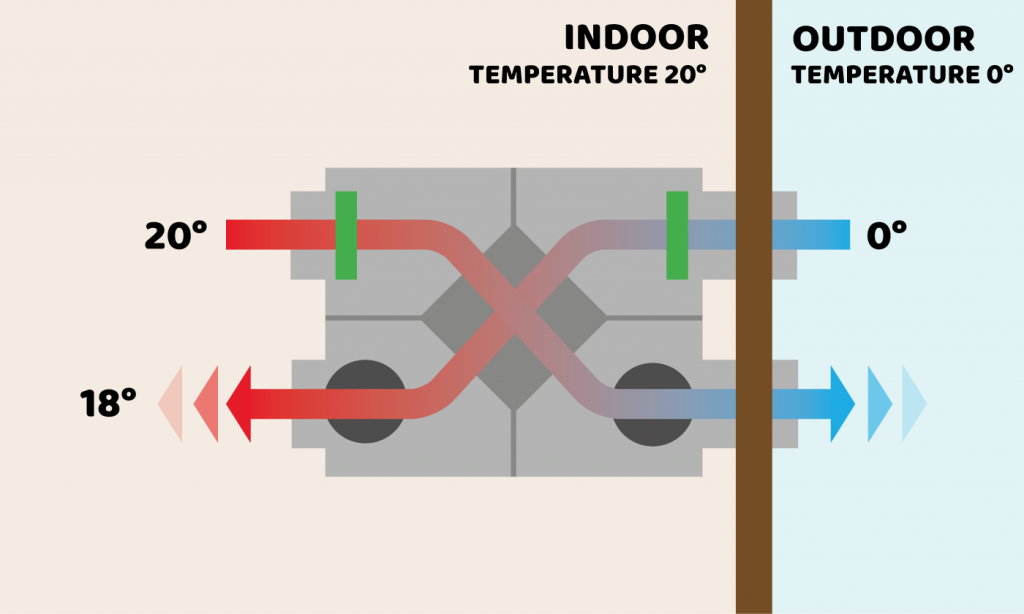The Sustainability Factor of HRV in Modern Homes
Checking out the Benefits of Heat Recovery Ventilation for Energy Performance in Homes
Heat Recovery Ventilation (HRV) systems provide homeowners a practical method to boosting power effectiveness. By reclaiming heat from outbound air, these systems can significantly decrease home heating and cooling prices. Additionally, they offer a steady supply of fresh air, enhancing indoor air top quality and comfort levels. As home owners think about lasting options, comprehending the subtleties of HRV systems becomes significantly important. What variables should one assess before making such a financial investment?
Understanding Heat Recovery Ventilation Equipments

How HRV Enhances Indoor Air Quality

Power Cost Savings: The Economic Benefits of HRV
Taking full advantage of energy effectiveness, heat recovery ventilation (HRV) systems supply considerable economic benefits for home owners. By recouping navigate here and reusing warm from exhaust air, HRVs substantially decrease home heating and cooling costs. This technology can lead to energy financial savings of up to 30%, relying on climate and usage patterns. House owners typically notice decreased utility bills quickly after installation, making HRVs an economically smart investment with time. In addition, numerous regions give rewards or refunds for energy-efficient upgrades, additionally enhancing the economic allure. As power costs proceed to increase, the cost-effectiveness of HRVs comes to be increasingly clear. Generally, the unification of HRV systems not just advertises power efficiency yet also adds to long-lasting financial cost savings for households.
The Environmental Influence of Heat Recovery Ventilation
A substantial environmental advantage of heat recovery ventilation (HRV) systems depends on their capability to minimize overall energy consumption. By reclaiming warm from exhaust air and transferring it to inbound fresh air, HRV systems lessen the need for energy-intensive heating and cooling down approaches. This reduction in power need adds to decrease greenhouse gas exhausts, as less nonrenewable fuel source is required to keep comfortable indoor temperatures. In addition, HRV systems enhance interior air top quality by effectively trading stagnant air with fresh outside air, lowering dependence on mechanical air conditioning systems that can harm the atmosphere. Overall, the implementation of HRV systems sustains sustainable living techniques and aligns with global efforts to fight environment adjustment by advertising energy performance in domestic settings.
Choosing the Right HRV System for Your Home
Exactly how can property owners guarantee they select the right heat recovery ventilation (HRV) system for their demands? They ought to analyze their home's size and design, as these aspects affect air flow needs. Next off, examining the system's effectiveness rankings is crucial, as greater check my blog scores indicate far better performance and energy financial savings. Homeowners ought to additionally consider installment and upkeep prices, contrasting different brand names and versions for value. In addition, it is essential to examine noise levels, as some systems operate more silently than others. Consulting with HVAC specialists can offer customized suggestions based upon particular home problems. Ultimately, examining individual evaluations and warranties can aid in making an educated decision, ensuring that the chosen HRV system effectively enhances indoor air high quality and energy efficiency.
Frequently Asked Concerns

Just how Commonly Should I Clean or Preserve My HRV System?
The regularity of cleansing or maintaining a warmth recuperation ventilation (HRV) system typically depends on use and ecological factors. Generally, it is recommended webpage to execute upkeep every six months to guarantee peak efficiency and air high quality.

Can HRV Solutions Assist Decrease Moisture Levels Indoors?
HRV systems can properly reduce indoor moisture levels by trading stagnant, humid air with fresh, drier air from outdoors. HRV Heat Recovery Ventilation. This process assists preserve a balanced interior environment, improving comfort and protecting against moisture-related problems
What Is the Life expectancy of a Common HRV System?
The life expectancy of a normal heat recovery ventilation (HRV) system differs, normally lasting between 10 to 15 years. Regular upkeep can expand its effectiveness and functional life, making sure peak efficiency throughout its usage duration.
Exist Any Type Of Sound Worry About HRV Equipments?
Noise worry about HRV systems can develop, particularly from follower procedure. Several modern-day units are designed to lessen audio levels, ensuring they operate silently while keeping effectiveness, which addresses prospective disruptions in living settings.
Can I Set Up an HRV System Myself, or Do I Need a Specialist?
The private contemplated whether to install the heat recovery ventilation (HRV) system personally or hire a specialist. Generally, while do it yourself installment is possible, experience assurances correct functionality and compliance with regional building regulations, enhancing system performance.